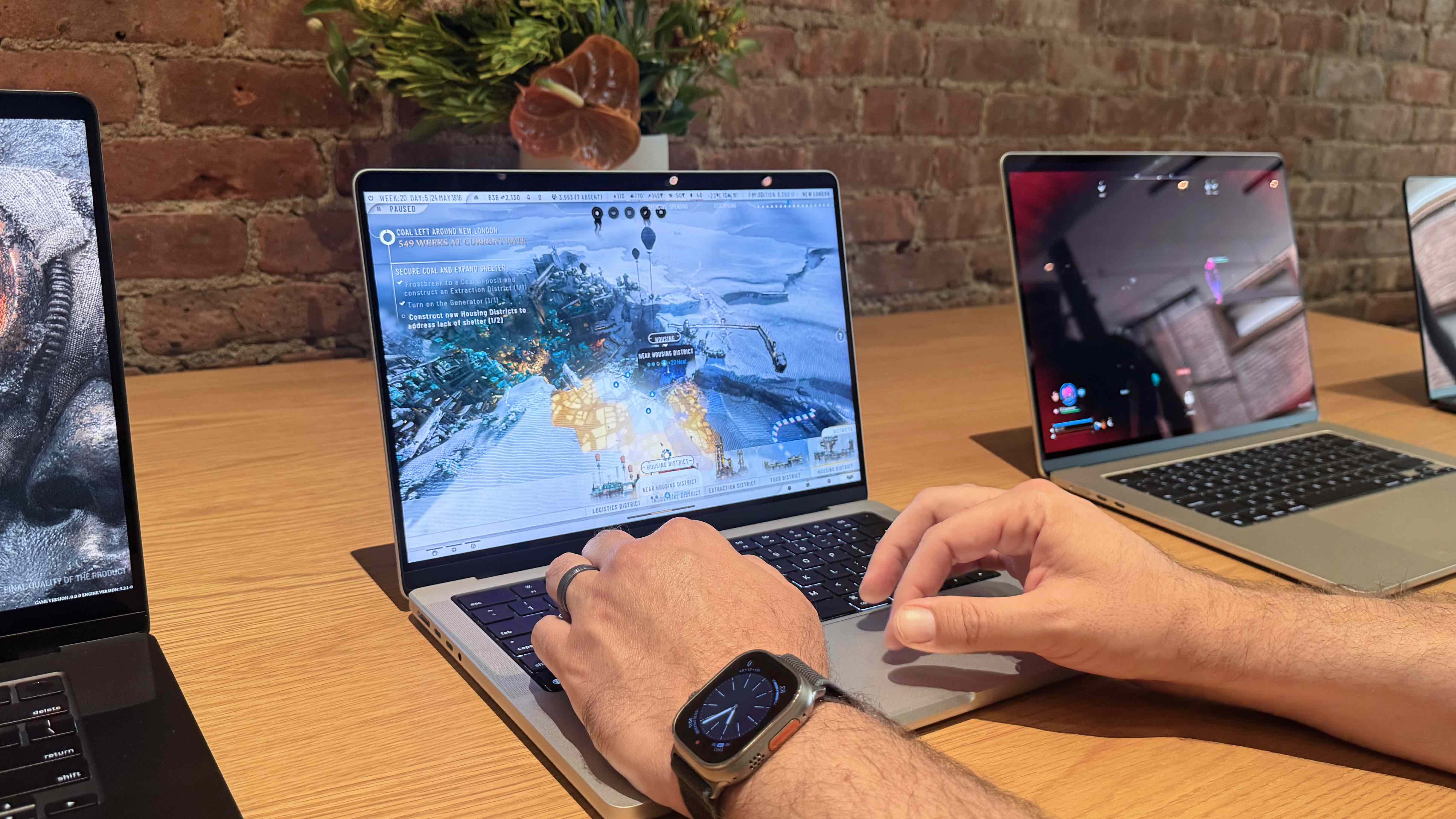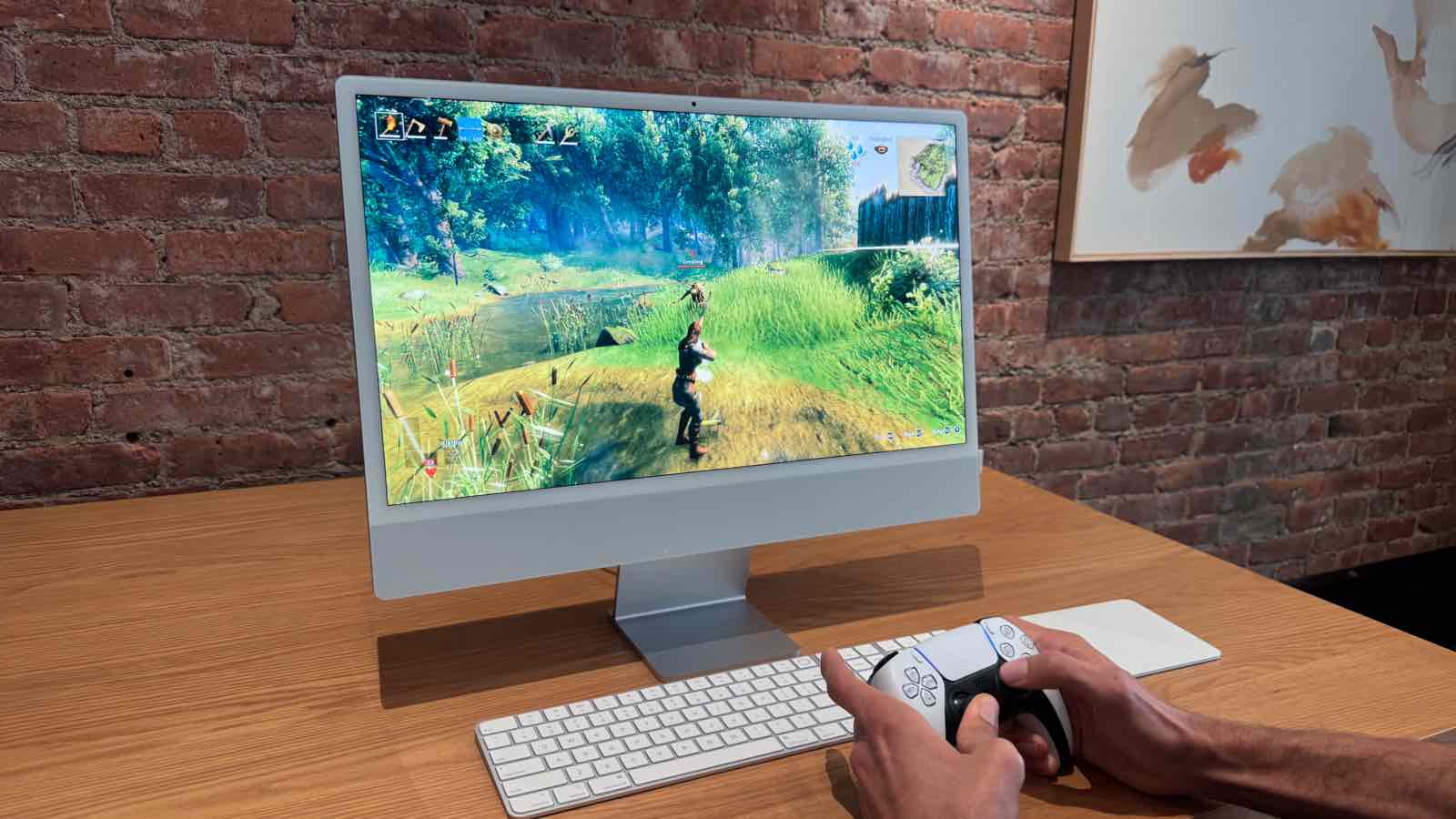How Apple is shaping the future of Mac gaming with advanced chips and developer tools
It's game on for the Mac lineup

Since Apple swapped the old Intel chips for its own silicon, it’s safe to say the Mac has been having a powerful renaissance. Whether it’s a MacBook Air or a Mac Studio, the machines are more capable than ever with better performance across the board, better efficiency, and the most impressive Mac graphics ever.
The company seems finally focused on gaming, especially gaming on the Mac, and the community has ballooned into something wonderful. We’ve seen more and more AAA titles launch on the Mac and, in some cases, on the same day and date. We’ve also seen the technology giant focus on Mac gaming by giving it a spot during its keynote addresses, including the annual World Wide Developers Conference, where it introduced tools native to macOS that make it easy for games to arrive.
Within this Mac moment, gaming on the Mac has gotten a boost, and it just keeps growing. To further unpack some of the recent news around Apple's Game Porting Toolkit 2, the impact of M3 family of chips, and the state of gaming on the Mac, I had a chance to chat with Leland Martin of Apple Software Product Marketing and Doug Brooks of Mac Product Marketing.
Gaming coming to in focus

Developers and studios will likely not come to Mac without the necessary hardware performance. Doug Brooks says that from the beginning of Apple silicon, the goal was to deliver a balanced system, one that includes “a great CPU, a great GPU, and a unified memory bandwidth to ensure that SOC performs well across all the dimensions a user cares about.”
Gaming hits this sweet spot: it needs power from all three – CPU, GPU, and memory – whether you play on a Mac, a PC, or a console. With the rollout of Apple silicon, starting with the Apple M1, Apple leveled the playing field across the Mac device lineup. Whether you buy a MacBook Air or a Pro, the performance has a high baseline thanks to Apple's chips.
This is vastly different from when Apple used Intel. When Macs were Intel-based systems, Brooks says “you really needed a Mac with a discrete GPU to deliver really good gaming performance.” For someone buying a Mac, that meant buying only higher-end models.
That's no longer the case with Apple silicon. Brooks says that “Every Mac with Apple silicon can play these latest demanding games,” calling it a fundamental change to its approach.
Get daily insight, inspiration and deals in your inbox
Sign up for breaking news, reviews, opinion, top tech deals, and more.
The approach has remained the same throughout Apple's generations. With the jump from the Apple M1 to Apple M3 platform, Brooks says the chips took the “largest leap forward in graphics architecture ever for Apple silicon with in a generation.” He notes that the Apple M3 GPU delivers modern features that many of the newest games use to create more realistic environments, including hardware-accelerated ray-tracing, as well as a 'Dyanmic Caching' and hardware-accelerated mesh shading.
These capabilities aren't reserved for the M3 Pro and M3 Max chips, though; they're available on any M3 chip, including the chips in the MacBook Air and the MacBook Pro. Brooks says “It wasn’t something we started on the high end and trickled it down. We’re just really excited about that different approach with bringing those technologies to the entire M3 family.”

We’ve seen a steady slate of game titles coming to Mac, capped by Hideo Kojima’s appearance at WWDC 2023 and Death Stranding: Director’s Cut arriving on the Mac. New titles like Stardew Valley, No Man’s Sky, and Resident Evil have also launched. Resident Evil was a milestone in Apple gaming performance.
To help developers port these titles over, Apple offers the Game Porting Toolkit, now the Game Porting Toolkit 2. Apple's Martin noted it “can help developers at any stage of development, whether it’s bringing over an older game that’s already created or from the start of a new title or the middle of their development.”
The process of using the Game Porting Toolkit can vary by game and title. Martin walked us through an example:
Within the Toolkit, developers can run an existing Windows game in an evaluation environment to establish a baseline for performance and ensure that the game engine is running correctly. Martin explained that with the second generation of the Toolkit, developers can “start debugging and profiling their game within the evaluation environment” – checking aspects like the Metal HUD (heads-up-display), GPU capture, and system trace.
Apple also delivered example code within the Game Porting Toolkit 2 that acts as a guide, showing developers how to convert their existing game code to Apple devices, allowing their games to run across iPhone, iPad, and Mac. This example code is based on the learnings from developers who have already done this, Apple says. According to Martin, a central goal of the Toolkit was to “streamline development for Apple platforms” and integrate developer feedback.
Game Mode on the Mac

For the player – enjoying Resident Evil 4 or Balder’s Gate 3 – macOS has a handy built-in tool – Game Mode – that automatically boosts performance. When you open a game, background activity is minimized to ensure lower latency and smooth frame rates. Martin said it’s achieved by “giving the game that’s being run the highest priority on the CPU and GPU.”
Regarding connectivity with either AirPods or wireless game controls, Apple is working some magic behind the scenes. With audio, Game Mode works to lower latency, something I got to demo, and it does make a difference, especially if the developer also adopts Apple’s Spatial Audio standard. Imagine hearing footsteps around you or being able to track an enemy before they appear. That's the possibility.
With game controllers, Martin explained that Apple has doubled the Bluetooth polling rate to effectively cut input latency in half. Again, this is another cool demo I got to experience side by side, and it could make or break gamers completing a task. Game Mode is currently on the Mac, but it will arrive on the iPhone and iPad with iOS 18 and iPadOS 18.
Apple is also offering a Unified Gaming Platform, which allows you to start a title on the Mac, save it in the cloud, and pick it up on your iPhone or iPad, or vice versa. Brooks called out Apple's unique fundamental value proposition within the market, as Apple silicon is the base architecture across the device portfolio. The software platforms – macOS, iOS, and iPadOS – share “so many critical frameworks like Metal. It really simplifies and makes it much more efficient to bring a title to all these devices.”
That’s a key advantage in Apple’s eyes, delivering a better experience for the user and the game studio. More widely, though, if Apple continues to offer these enhancements on the consumer side and the developer side, we might see larger games arrive.
It’s a trend that Martin called out – “AAA studios are already recognizing the rapidly growing opportunity with the Mac, and we’re seeing more and more these types of games coming to the platform including Frostpunk 2 and Assassin’s Creed Shadows.” Further, Apple has been rolling out and updating the tools for developers, including Game Porting Toolkit 2 and Game Mode, annually.
Given that some AAA games, like Resident Evil and Death Stranding Director's Cut, are already available on Mac, iPhone, and iPad, Martin’s idea of a changing gaming landscape isn't fantasy. He believes that “we’re entering a world now where I think it will just be impossible to forget your favorite game console, because you have it with you,” referring to an iPhone and a Mac.
“That’s the real strength and what’s unique about playing games in the [Apple] ecosystem, where not only can you play across these devices, but you can also buy them just once and play it across all three,” said Martin.
Titles released on the App Store can be purchased for iOS, iPadOS, and Mac. Further, Apple will soon allow developers to reduce game file sizes to let you install with less space and even support an external disc as the install location.
Brooks agrees with the notion of a bright future and compelling offers for both players and developers but also mentions the commonality across Mac, iPhone, and iPad right now in that they’re “all capable of playing these latest advanced games, and it’s a really exciting offering to be able to go there with us [Apple].”
The outlook

I’ve seen the democratization of capabilities across the Mac, evidenced by the Apple M3's graphical performance from the MacBook Air up the line. It’s also more evident with the iPad, and considering that the iPhone 15 Pro Max with the A17 Pro can also handle these titles, one could argue that with future generations, even more folks will be able to play and save games across Apple devices.
That’s something to get excited about! While Apple has already delivered a lot of momentum and progress for developers and players alike, gaming on the Mac still feels like it’s growing, and it’ll be an essential area to watch as more titles are ported and released natively. It’s a very bright future, and it’s evident that more studios are coming on board.
Considering that the latest Windows ARM PCs aren’t necessarily fit for gaming yet, Apple’s should seize the momentum here, and I expect we’ll see more adoption with macOS Sequoia, iOS 18, and iPadOS 18.
You Might Also Like...

Jacob Krol is the US Managing Editor, News for TechRadar. He’s been writing about technology since he was 14 when he started his own tech blog. Since then Jacob has worked for a plethora of publications including CNN Underscored, TheStreet, Parade, Men’s Journal, Mashable, CNET, and CNBC among others.
He specializes in covering companies like Apple, Samsung, and Google and going hands-on with mobile devices, smart home gadgets, TVs, and wearables. In his spare time, you can find Jacob listening to Bruce Springsteen, building a Lego set, or binge-watching the latest from Disney, Marvel, or Star Wars.